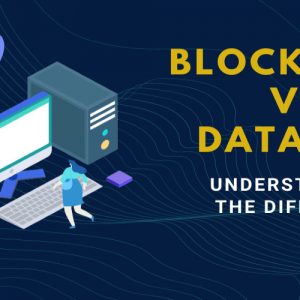A blockchain is a type of database or ledger. It is used for electronically storing information in a tabulated form. The list of records keeps growing, and it is linked using a technology known as cryptography. Blockchain technology is a relatively new concept. However, it is experiencing quite a fast growth rate. This has led to the introduction of things like a blockchain app. In this write-up, we discuss blockchain Vs. Database.
What is the difference between a blockchain and a database?
These two terms are often used together. As mentioned earlier, a blockchain is a type of database. Below are some differentiating factors between the two elements.
1. Definition
A database is a centralized ledger that an administrator runs. It features some unique features, like its ability to read and write. It also features the ability to store multiple copies of the same data as well as its history. On the other hand, a distributed ledger technology allows a set of pers to work together. This means that it does not require a single administrator.
2. Storage structure
One of the key features that can separate a blockchain from a database is the storage structure. In a blockchain, all the information is collected in groups known as blocks. Each block can hold a limited amount of data. Once the limit is reached, the data is appended onto the former block. The process repeats itself with each new block. This results in the formation of a chain of blocks known as a blockchain. On the other hand, in a database, the information is stored in tables instead of blocks.
3. Authorization
A blockchain uses a distributed ledger technology. This means that it allows a group of peers to collaborate. In simpler terms, it will enable a group of peers to create a combined decentralized network. The peers can communicate and share data thanks to the consensus algorithm. All this is also made possible because there is no need for a centralized authority.
On the other hand, a database is a centralized ledger. This means that it also requires a centralized authority. This is the reason why an administrator typically runs a database. Like the decentralization feature of blockchains, centralization also has its benefits.
For instance, it allows for the effortless management of databases. However, the system also has several drawbacks. Perhaps the biggest drawback is that the system makes the data vulnerable to corruption. For this reason, most people who use databases opt to create multiple backups.
Final word
Other than the information provided above, there are several other reasons differences between these two concepts. However, the above information will help you understand the fundamental differences before you go into the complexities of each concept.
Also, note that the information above explains why a blockchain can be referred to as a database form while a database cannot be referred to as a blockchain. Most experts agree that blockchains are a better alternative and a modern version of databases. This is one of the main reasons for the fast growth of the blockchain industry.
